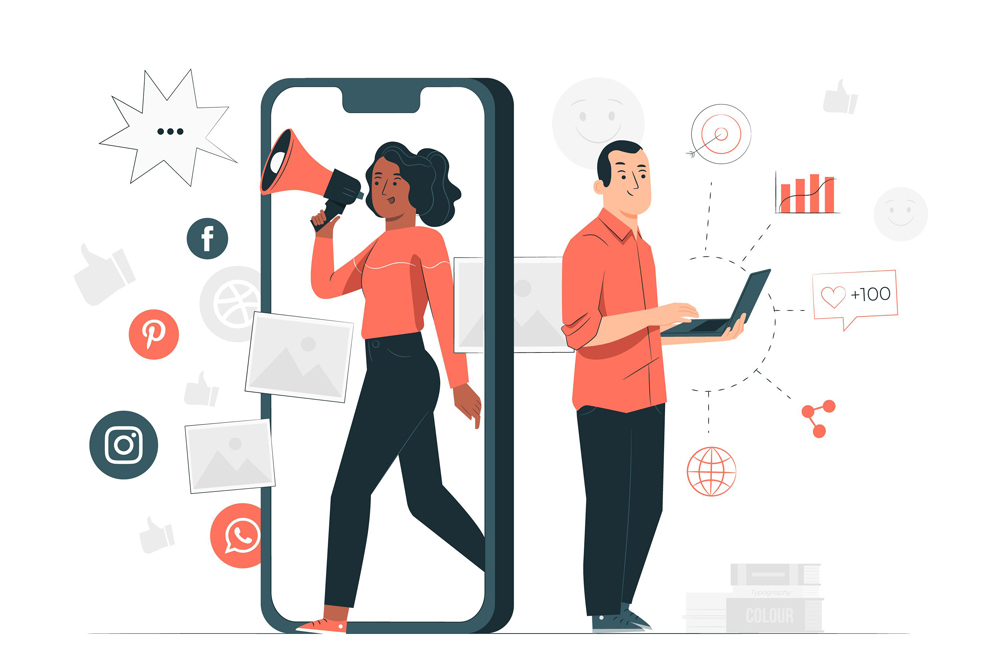Incorporating social media and social learning into e-Learning
Social media has become a big part of our lives. Everyone has used a social media platform at some point, if not regularly.
But did you know that according to research, social media has also played a significant role in learning and development? YouTube, LinkedIn, and – not surprisingly – Google are used by 70% of modern learners in the United States to answer their on-the-job questions.

These statistics are not surprising as we all have likely searched “how to” questions on YouTube and Google to quickly learn a skill or find a way to do our job better. And with the advent of Facebook groups and online discussion forums such as Quora and Reddit, finding answers to often very specific questions has never been easier. Imagine being part of a specialized and highly interactive Facebook group, say for educators or marketers, and getting real-life solutions in a matter of minutes.
Interestingly, we normally do this even before asking a colleague or friend, given that social media tools are accessible, familiar, and very easy to use. They offer several answers, options, and alternatives, not to mention the fact that by asking others, we are risking our credibility or self-esteem due to what’s perceived as “silly questions.”
How can organizations take advantage of social media tools?
Social psychology emphasizes the importance of learning in a social environment. Learning in the presence of a social network has proven to have a strong impact on outcomes and behavior. Social media platforms provide this social network at the tip of our fingers, and this is how people learn in today’s world.
By allowing social interaction in learning and development programs, organizations can take advantage of the power of social media as a learning solution. They should recognize that their employees and learners can easily access platforms outside their resources and consider certain content from web 2.0 as relevant and credible.
They can adopt this way of learning by guiding their learners about websites or pages that are considered credible. LinkedIn and YouTube can acknowledge, normalize, and authenticate “just in time learning” as an acceptable practice for learning skills on the go. As the name suggests, “just in time learning” refers to having access to information when you need it. Especially in high-paced environments like startups, this method of learning is critical.
Organizations can also organize their learning management platforms such that it encourages collaboration. For example, features like forums, polls, and network updates provide opportunities to learn in real-time and increase engagement.
What are the formats used for learning through social media?
With all the social networks available nowadays, there are so many formats available for learners. These options are an advantage for learning and development, given that learners have their own needs and learning styles. By allowing students to participate in a whole plethora of resources across multiple social networks, organizations can take advantage of a wide array of formats, as follows:
Videos
Students can consume video content on their own. Even in remote work settings, colleagues and supervisors can record or share their screens and show how a specific task or work item can be completed. Especially for step-by-steps and practical applications, video formats are a great way to learn at a learner’s own time and pace.
Discussion forum
Online community groups such as Facebook groups and discussion forums like Reddit and Quora are perhaps the most accessible way to find answers to (sometimes very specific) questions. Having people answer with their real-life experiences relevant to the specific context of a question can be a rich knowledge resource. Even Twitter – provided that the right audiences are tagged – can provide real-time answers.
Audio
The clubhouse has started a whole trend and is shining a spotlight on audio-only formats, so much so that the other social media giants like Facebook, Twitter, and LinkedIn are creating their versions. The real-time social interaction that audio formats provide can be relevant for learners who want to learn about practical applications, strategies, tactics, tools, and techniques by others in their field. Even podcasts and audiobooks are great ways to learn, especially for people on the go.
Gamification
Gamification adds an extra layer of engagement and healthy competition in the context of social learning. Using tools like leaderboards and rewards makes learners more invested in the learning experience than the more passive formats. In addition, games and competitions motivate learners to finish the content and do better than they would learn on their own.
